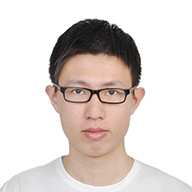A Dual-Band Electrical Balance Duplexer for FDD Radios

Speaker: Kejian Shi
Affiliation: Ph.D. Candidate
Via Zoom: https://ucla.zoom.us/j/92447879466
Abstract: The SAW duplexer is one of the last remaining bulky off-chip elements that limits the slimness of mobile wireless devices. Without it FDD operation is impossible, since the power amplifier and receiver share the antenna and high transmit power can saturate the receiver front-end. The Electrical Balance Duplexer (EBD) is an alternative that can be integrated on a chip, at lower cost and in a much smaller volume. Unlike the SAW duplexer, it isolates the RX from the PA through the nulling action in a hybrid transformer (HT). The duplexer must attenuate the signal being transmitted in the TX band that will couple into the RX front-end circuits, as well as wideband noise amplified by the PA that falls in the RX band.
The HT isolates the TX from the RX by balancing ZANT with a variable impedance, ZBAL. In the mobile wireless device, ZANT changes with orientation and proximity to the user’s body, as specified by a range of antenna VSWR. And in small antennas, ZANT is a strong function of frequency indicated by high QANT, which means that it changes considerably from fTX to fRX. The EBD is viable if a circuit for ZBAL is devised that tracks changes in ZANT with user interaction, and it isolates in the TX channel (fTX) independently of the RX channel (fRX) selected for FDD.
Previous work on EBDs falls into three categories: first, high antenna VSWR coverage but no dual-band capability; second, high antenna VSWR coverage but dual-band capability only for specific cases; third, general dual-band capability but poor antenna VSWR coverage. An EBD without dual-band capability but with an additional integrated filter cannot be used at practical TX outputs of, say, +27dBm. We describe a dual-band EBD for WiFi 6/6E (5-6GHz TX, 6-7GHz RX) achieving general dual-band capability and high antenna VSWR coverage.
Biography: Kejian Shi is a Ph.D. candidate in the Electrical & Computer Engineering Department at UCLA. He is pursuing his Ph.D. at UCLA since winter 2018. He received the B.S. degree in Physics from Peking University, Beijing, China, in 2015, and the M.S. degree in Electrical Engineering from UCLA in 2017. He has interned at Cisco in 2016, Qualcomm in 2017, Blue Danube Systems in 2018, and Broadcom in 2019. His research interests include radio frequency and analog integrated circuits and systems design. He was a recipient of the Ph.D. Preliminary Exam Top Student Department Fellowship in 2017, and the Broadcom Foundation Fellowship in 2018.
For more information, contact Prof. Asad A. Abidi (abidi@ee.ucla.edu)
Date/Time:
Date(s) - Oct 19, 2020
2:00 pm - 4:00 pm
Location:
Via Zoom Only
No location, Los Angeles
Map Unavailable
